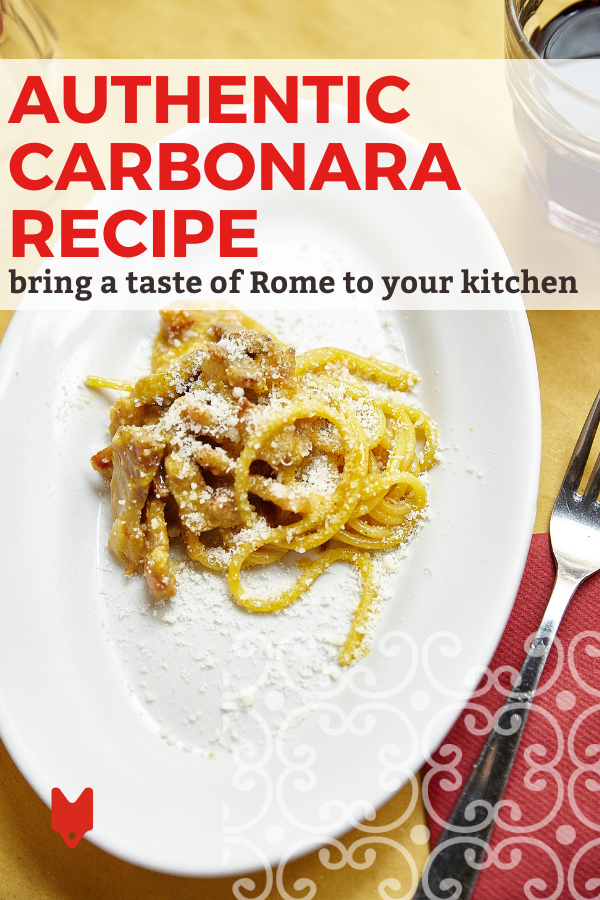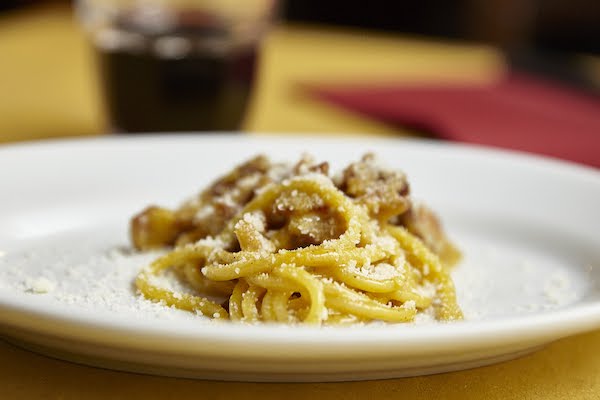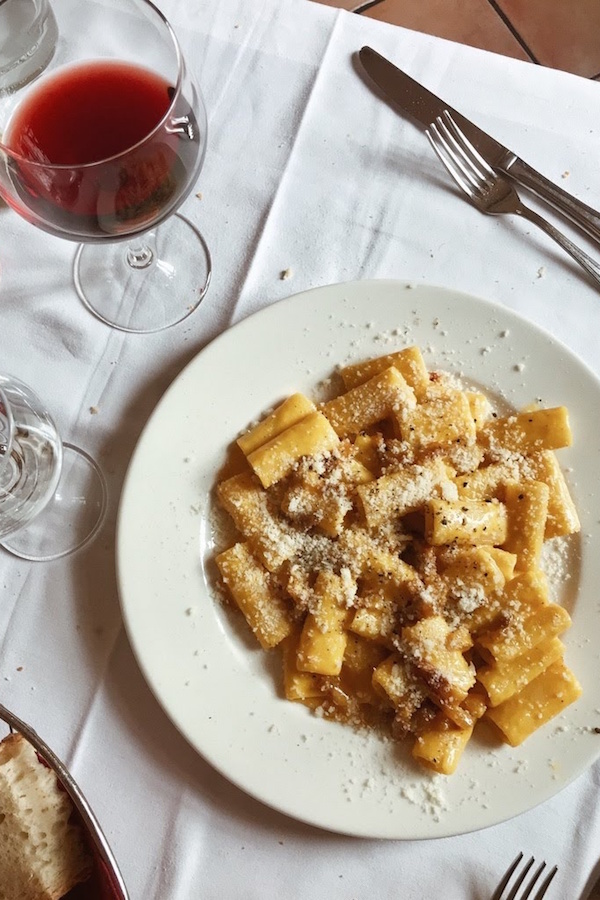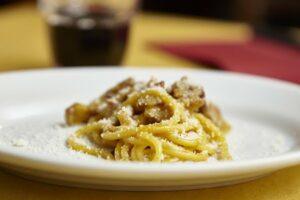Last Updated on February 28, 2022 by | Published: October 6, 2020
Forget everything you think you know about carbonara.
Outside of Italy, carbonara pastas are often unrecognizable. Drenched in a thick cream sauce and studded with peas and bacon, these international adaptations are a far cry from the traditional carbonara recipe used in Rome.
But here in the Eternal City, real carbonara is one of the best things you’ll eat. (And that’s saying a lot—this is Italy, after all.) A lighter, smoother egg-based sauce, plenty of pecorino cheese, and salty, crispy guanciale come together beautifully in this classic dish.

Secrets to a perfect carbonara
Carbonara is one of the four classic Roman pastas alongside gricia, amatriciana, and cacio e pepe. All four recipes are based on pecorino romano, a sharp sheep’s milk cheese that, despite the name, is mostly produced on the Italian island of Sardinia today. If you don’t have pecorino available, Parmesan cheese is a good substitute, but it does lack the bite that pecorino imparts.
In addition to pecorino, another major player in the flavor of carbonara is guanciale. Guanciale is cured pork jowl with a strong flavor and delicate texture, which comes from an intense curing process of at least three months. During that time, the meat is seasoned on the surface with a blend of herbs and aromatics, usually including garlic, rosemary, salt, pepper and sage.
If you don’t have access to guanciale, another acceptable option is pancetta. This cut comes from the belly of the pig and is more similar to bacon than to guanciale, but it makes a good substitute in a pinch, especially in countries like the US and Canada where guanciale is not as readily available.
In addition to the cheese and the rendered fat from the guanciale, real Roman carbonara gets its silky texture from two other key ingredients. The first is eggs, which you’ll want to be as fresh as possible—we’re not fully cooking them here, but rather just warming them through. And finally, a bit of starchy pasta cooking water helps the sauce cling to the pasta and ensures maximum flavor.
RELATED: The 5 Best REAL Carbonaras in Rome That Italians Love

The best pasta shape for carbonara
Even many Romans can’t agree on which is the best type of pasta to use in carbonara. The most common options are traditional spaghetti and tube-like rigatoni. Both are delicious and hold the sauce perfectly, so it all comes down to taste!
We use spaghetti in our traditional carbonara recipe here, but if you’d rather try rigatoni or another pasta shape, have at it.

Traditional carbonara recipe
Serves 2
Ingredients
- 7–10 ounces (200–300 grams) spaghetti
- 7 ounces (200 grams) guanciale or pancetta, cut into small cubes
- 1 whole egg
- 2 additional egg yolks
- 1 cup (100 grams) freshly grated pecorino romano or Parmesan cheese, plus more for topping if desired
- Cracked black pepper, to taste
- 1 cup (235 milliliters) reserved pasta cooking water
Instructions
- Bring a large pot of salted water to a boil Add the pasta and cook until al dente.
- Meanwhile, slowly cook the guanciale in a large pan over low heat. Make sure the fat from the pork is fully rendered (if not, the sauce will not come together properly). Remove the pan from the heat when done.
- In a separate bowl, beat the egg and yolks until combined. Add the grated cheese and black pepper.
- When the pasta is al dente, drain (reserving one cup of the cooking water). Add it to the pan with the cooked and rendered guanciale.
- Stir the pasta and guanciale until every noodle is coated with fat. Slowly pour in the egg and cheese mixture, stirring continually.
- Start to pour in a bit of the starchy pasta cooking water, stirring constantly. Add the water slowly, but keep in mind that it’s best to add more liquid than necessary—the pasta will absorb more as it sits.
- Let the pasta sit for a minute, covered.
- Serve with extra cheese on top if desired.








